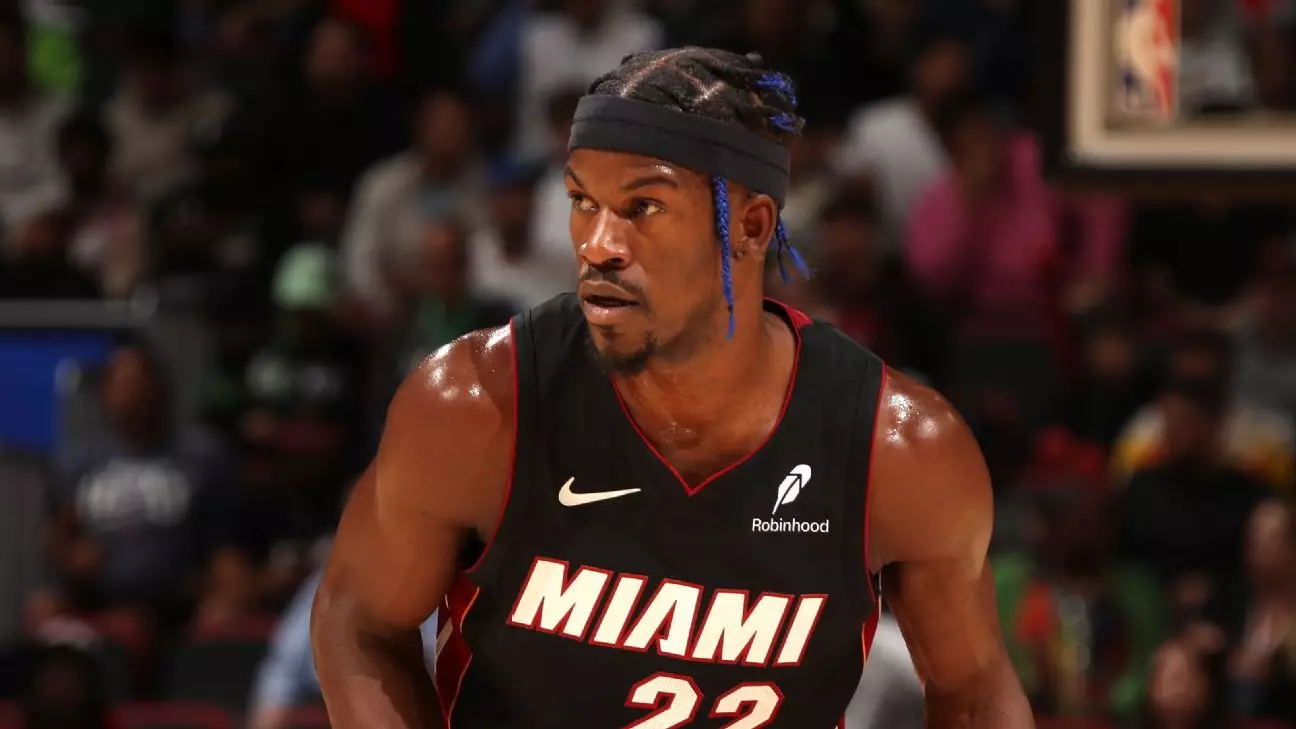The ongoing saga of Jimmy Butler and the Miami Heat has garnered substantial attention, intensely highlighting the complexities of professional sports relationships. As Butler is expected to return to the court against the Denver Nuggets, his presence raises critical questions not just about his ability to contribute but about the broader implications of his emotional and professional state. This situation poses a fascinating blend of internal strife, negotiations for change, and the consequences that accompany high-stakes athletic careers.
Butler’s recent absence from the Miami Heat roster due to suspension highlights issues that go beyond mere statistics. The Heat suspended Butler for conduct detrimental to the team, a vague moniker that often masks deeper team dynamics and player emotions. The Heat’s record during his suspension (3-4) demonstrates not only the cost of losing a star player but also the mental strain the whole team experiences amidst such tension. The suspension served as both a wake-up call for Butler and a moment of reflection on his role with the organization.
Questions immediately arose regarding whether Butler, who has been a cornerstone of the team’s recent successes, would ever wear a Heat jersey again. His return to action signifies a tentative truce between the player and the organization, shedding light on the intricate relationship that exists behind the scenes of professional sports. The mutual reliance on both Butler’s talents and the team’s structure makes their relationship pivotal to both parties’ prospects.
As Butler prepares to return, it’s essential to consider the emotional toll professional athletes grapple with. During a candid interview, Butler expressed a profound longing for joy in his performance and competitiveness, stating that he felt he had lost his thrill while playing in Miami. His sentiments reflect a larger issue within professional sports—how personal satisfaction and professional success can sometimes diverge.
Butler articulated his desire to “get back to somewhere dominant,” which resonates with many elite athletes who fear stagnating in their careers. This intrinsic motivation to excel, juxtaposed with external expectations, creates a dichotomy that can lead to frustration and subpar performance. His situation emphasizes the significance of psychological well-being in sports—something that often takes a backseat amid physical training and performance metrics.
Jimmy Butler’s dilemma is compounded by the complexities of potential trades. With a significant contract that nears $49 million this season—along with an option that could bring him $52 million next season—the intricacies of negotiation are far from simple. The newly instituted collective bargaining agreement adds layers of complication, making it increasingly difficult for teams to absorb high-value contracts like Butler’s.
While his performance, evidenced by a career-high shooting percentage this season, suggests he still holds significant value, his declining scoring average is a notable concern, deepening the scrutiny of his fit within the Heat’s long-term plans. The organization’s prior assertions that they would not seek to trade Butler bring additional tension, given his recent demands.
As Butler anticipates his return to the game, both he and the Heat organization stand at a critical juncture. The delicate interplay of loyalty, ambition, and personal satisfaction plays a decisive role in shaping his and the team’s immediate future. The effectiveness of communication between Butler and the coaching staff will be paramount as they navigate the potential pitfalls of lingering dissatisfaction and the desire for greatness on the court.
Ultimately, the unfolding events surrounding Butler will serve as a case study in modern basketball, showcasing not only the raw talent of an individual player but also illuminating the human aspects embedded within the world of competitive sports. The interplay of ambition, capability, and emotional fulfillment remains a potent theme, reminding fans and analysts alike that behind the metrics and contracts, there are human beings striving to find their place in this ever-evolving game.


Leave a Reply